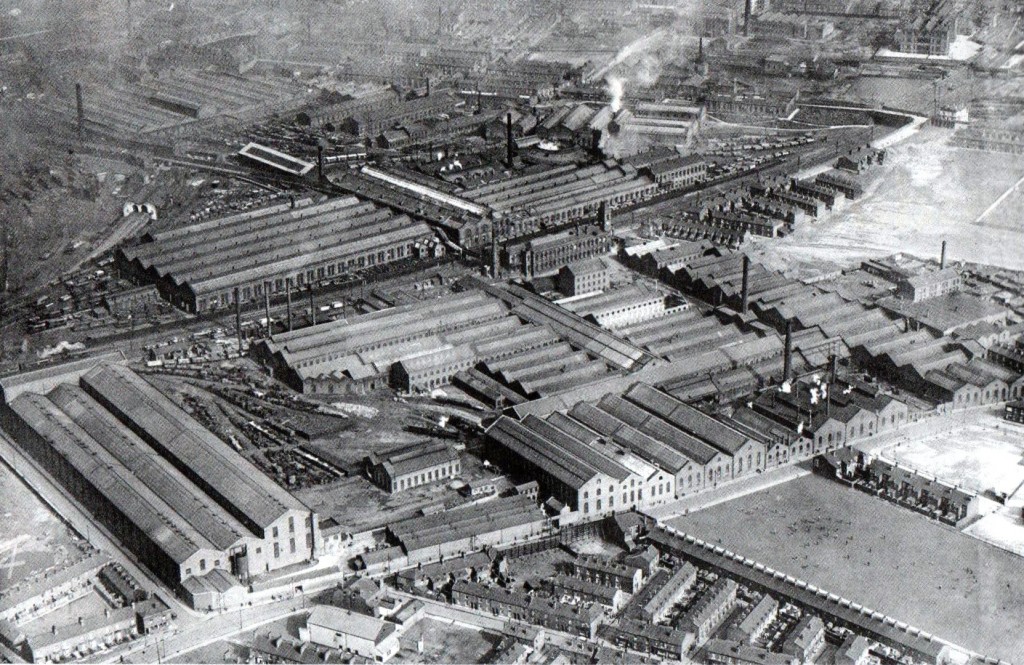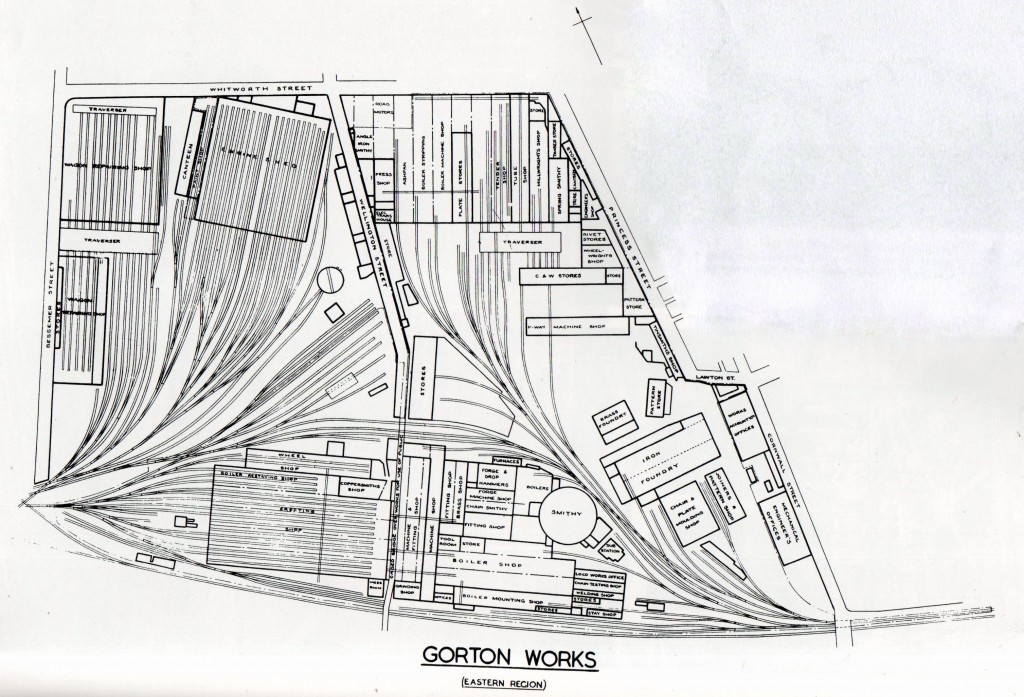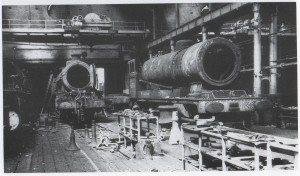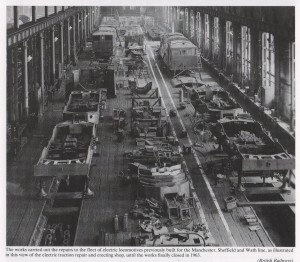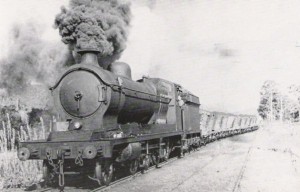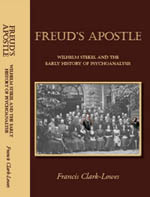(Gorton Locomotive Works)
I started an engineering apprenticeship at ‘Gorton Tank’ on 2nd October 1961. I worked for three months in the machine shop, turning bolts, washers, bushes, nuts and so on, then I was transferred to the brake shop, and after that worked in the cylinder shop.
We started work at 7.30, shortly before which, to the sound of the factory hooter, nearly 3000 workers, Modern-Times-like, would converge on the works and clock in at the various manned clocking machines in each shop. We had an hour’s lunch break, and finished at 5.10 p.m., by which time I was usually dirty and exhausted.
‘The Tank’ was built in 1848 by the Manchester, Sheffield and Lincolnshire Railway, initially for the maintenance of locomotives built elsewhere. It’s first engine was produced in 1858. In 1897, during the construction of the ‘London branch’ of the MSLR, which linked up with the Metropolitan Railway at Quainton Road north of Aylesbury, the company was renamed the Great Central Railway. In 1950 the last steam locomotive was built and the first 1500 volt DC electric locomotive rolled out for the newly electrified route to Sheffield. It was partly because of the electric connection that I went to Gorton, rather than Derby, Crewe or Horwich, but this was a badly informed choice because the 1500 DC system was subsequently abandoned in favour of 25 KV AC for most main lines, leaving the 600 volt DC third-rail system for the old Southern routes.
All of the work I did at Gorton related to steam engines, with occasional visits to the adjoining engine sheds to fix brake problems. While working on an O4 in the sheds one day my colleagues and I managed to dislodge the piston from a break cylinder, and it swung lose, narrowly missing my head. Those things were not light, so I shudder to think what would have happened had it hit me.
One day and one evening a week I attended Stockport Technical College to study Mechanical & Electrical Engineering, Applied Maths and Technical Drawing. Due to some mistake by the Training Department of BR I entered these courses late, and never caught up. This played its part in my decision to abandon the apprenticeship in April 1962, and the following September to restart my aborted education. But the collapse at that point of my father’s career as a prep school headmaster played its part.
Gorton Tank closed only a year after I left, as part of a rationalisation process, that is in 1963.
Around 2001 I went on holiday to North Norfolk, and as is my wont, I visited all the interesting railways lines I could find in the area. One of them was a miniature railway, on the trackbed of an old standard gauge line, and to my immense surprise, I noticed engraved on the side of one of the engines the name of the designer, Neil Simpkins. He had been a fellow apprentice at Gorton when I was there, but unlike me he had stayed the course and become an engineer, though not with British Railways.
I managed to get his contact details and we exchanged life histories. I particularly remember that Neil was in the ETU (Electrical Trades Union), while I was in the AEU (Amalgamated Engineering Union), and our two unions were in a demarcation dispute. The result was that for a while, when I visited Neil on the shop floor, he wouldn’t be working. I always thought of Neil as much more savvy about the ways of the world, and I was probably right. Click here to see my AEU Membership Card.
Locomotives Built or Overhauled at Gorton Tank. This file lists eight locomotives built at Gorton which have been preserved in various parts of the world. There are many more locomotives which were designed at Gorton, but were built elsewhere (sometimes with modifications). Here, for example, is a picture and explanatory text I found on a Mine Exploration Forum.
“The locomotive pictured from the Richmond Vale archive Album, is a remarkably interesting machine being a WW1 British built Ministry of Munitions 2-8-0 ex ROD (Railway Operating Department) loco. It is 1 of 13 purchased by J & A Brown of New South Wales Australia from the British Govt, for use on the Richmond Vale Railway serving the J A Brown Collieries. These locomotives were basically a Great Central Railway (GCR) 8K class 2-8-0 such as the preserved 63601 at Loughboro, the design dating back to 1911.”
Here is a link to the record of my time at Gorton in Railway Notebook 2: RNB2 101-102 Gorton.

